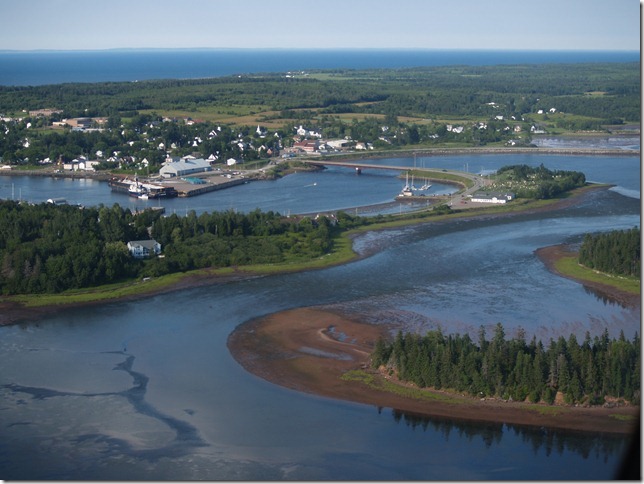|
Ecology

Pugwash River Estuary
For those not familiar with an estuary, it is a semi-enclosed
body of water, formed when freshwater from rivers and coastal
streams flow into and mix with the ocean’s salt water. They are
fascinating and beautiful ecosystems, distinct from all other
places on earth. Although influenced by tides, estuaries are
protected from the full force of ocean waves, winds and storms.
Their sheltered waters support unique communities of plants and
animals. They are among the most productive places on earth.
 A dedicated group of volunteers formed
Friends of
the Pugwash Estuary, to help protect and enhance the Pugwash River
environment.
The Friends, along with the
Department of Fisheries, maintain an accurate overview of the
health of the river and estuary.
A dedicated group of volunteers formed
Friends of
the Pugwash Estuary, to help protect and enhance the Pugwash River
environment.
The Friends, along with the
Department of Fisheries, maintain an accurate overview of the
health of the river and estuary.
The Friends of the Pugwash Estuary discover the past, protect
the present, enrich the future and educate on the importance of
estuaries.
For more information and how you can help, please contact Alice
Power, a.power@seasidehighspeed.ns.ca or phone 902-243-3580
Find the Friends of
the Estuary on
Facebook
The Nature Conservancy of
Canada (NCC), is Canada’s largest private land conservation
organization. For over 12 years, NCC has been working to protect
the rich and diverse wetlands and forests of the Pugwash
Estuary. Working in partnership with local landowners, community
volunteers and the groups like the Friends of Pugwash, NCC has
successfully protected over 1,000 acres of salt marsh, mudflat
and forest ecosystems here, and 15 kilometres of shoreline.
NCC’s work here represents the largest assembly of conservation
land anywhere along the Northumberland Strait in Nova Scotia.
*****
Wallace Bay Wildlife Area
The Wallace Bay Wildlife Area, locally known as the “ bite-o",
is a
project of the Canadian Wildlife Service (Environment Canada),
Ducks Unlimited and the Wallace and Area Development Association
(WADA). It opened in 1980. The Wildlife Area sits on 585
hectares of land. In the early 1700s French settlers built aboiteaux
(dykes) to collect fresh water and keep it
separate from the salt water. By separating the salt and fresh
water the
aboiteau
created boundaries between many ecosystems.
An easy six kilometre trail winds along the aboiteau, across salt
marsh, tidal flats and mudflats. It continues through Ducks
Unlimited duck impoundment in fresh water marsh, swamp and
mudflats. The trail passes through hard and softwood, cleared
land, neglected farms, scrub, streams and bogs.
From rest stops and watch houses one can see hawks, osprey,
eagles, herons, the occasional bittern, kingfishers, woodpeckers
or some other of the area’s 168 bird species. Stand quietly;
gently tap two stones together and a rail may come to you. One
can also see 21 species of fish, amphibians and reptiles. The
Wildlife Area is the habitat of 26 species of mammals, including
muskrats and beavers.
The parking lot has a canoe and kayak ramp into fresh or salt
water. The only facilities are picnic tables.
Directions: East of Pugwash on the Sunrise Trail, ten kilometres.
Turn left onto the Aboiteau Road. It is approximately three
kilometres to the Wallace Bay Wildlife Area.
|